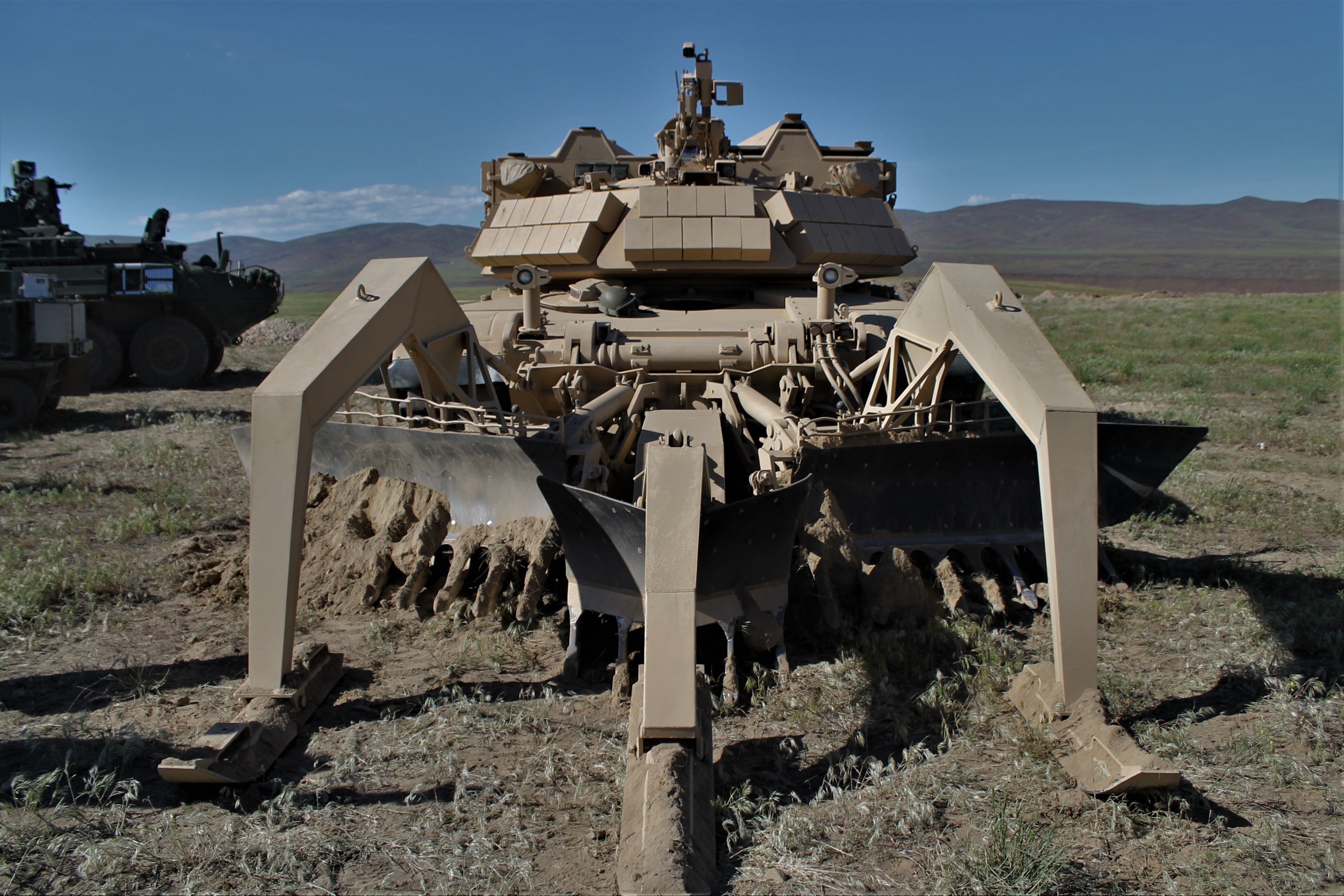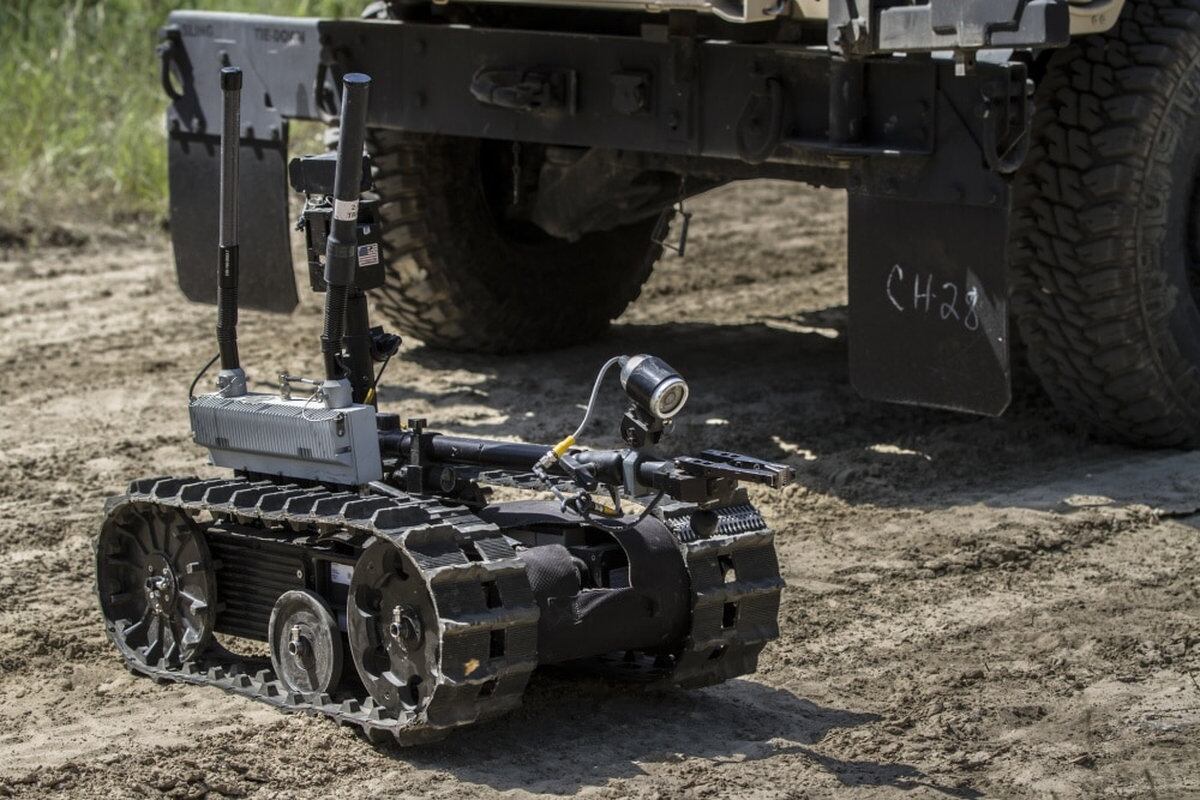LONDON — A FLIR system that deploys tiny UAVs from a ruggedized container affixed to the front of a vehicle is helping shape how advanced teaming can be used tactically against near-peer threats.
At DSEI — a major defense exposition in London — the system that deploys Black Hornet UAVs, which is the system chosen by the U.S. Army for the Soldier Borne Sensor program, made its appearance in several variations around the showroom floor.
German company Rheinmetall had it on the front of its Mission Master unmanned ground vehicle representing a surveillance variant.
Norway’s Kongsberg had the system integrated with a remote weapon station. The idea is that the package of tiny UAVs can be forward-deployed from a combat vehicle while soldiers stay inside and maintain standoff from enemy forces. The UAVs can perform reconnaissance and possible targeting assistance so the vehicle knows where it can shoot.

The data from the drone’s tiny camera can feed into the vehicle’s weapon station, providing intel to the gunner.
The concept was first unveiled as a prototype at the Association of the U.S. Army’s annual conference in Washington in 2018, but it is now a complete system ready for the market, according to Ole Aguirre, FLIR senior director of UIS strategic initiatives and partnerships in the company’s unmanned systems and integrated solutions division.
The system accommodates four Black Hornets in four individual compartments, which close up to protect the little drones. Two UAVs can simultaneously deploy while the other two charge using power from the vehicle, Aguirre said.
RELATED

The entire box that can be attached to the front of the vehicle is ruggedized to withstand the environment of a tank, Aguirre added.
The system can be controlled from inside the vehicle using the remote weapon station or a tablet, or the traditional controls that go with the U.S. Army’s Soldier Borne Sensor. It has been built using NATO standards so it can be integrated into command-and-control systems.
Placing the box of UAVs outside of the vehicle is important so that a soldier wouldn’t have to open the hatch on a vehicle to throw one out. Plus, space is highly limited inside most tanks and combat vehicles.
The Black Hornet’s range is roughly a 2,000-meter radius, but FLIR wants to extend the range of the UAV to meet a requirement defined by a pacing threat of 3,000 meters, Aguirre said.
Because the system is versatile, it can be used on small unmanned ground vehicles, tanks and most everything in between. FLIR sees an opportunity among the U.S. Army’s many vehicle modernization programs and with current systems.
RELATED

The company is investing in evaluating utility for the U.S. Army, Aguirre added, but there is also strong international interest in Europe and the Middle East.
The system is a step forward in conceiving feasible integration concepts for advanced teaming between UAVs as well as manned and unmanned ground vehicles.
Two years ago at DSEI, there was a striking lack of integration of unmanned aircraft systems into vehicle concepts.
For example, Finnish defense company Patria was the only one to display a concept integrating a drone with a vehicle — mounting the hand-launched Black Hornet atop a little stick on the roof of the back end of its armored modular vehicle.
Eurosatory in 2018, held in Paris, showed a little more evolution in advanced teaming between aerial systems and vehicles.
The U.S. Army’s plans to evaluate a wide variety of advanced teaming concepts as part of a major modernization effort through its brand-new Army Futures Command could be driving much of the proliferation of ideas now popping up at defense trade shows.
Jen Judson is an award-winning journalist covering land warfare for Defense News. She has also worked for Politico and Inside Defense. She holds a Master of Science degree in journalism from Boston University and a Bachelor of Arts degree from Kenyon College.








